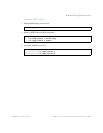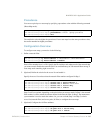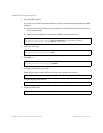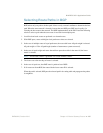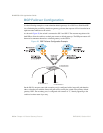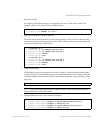
BLADEOS 6.5.2 Application Guide
BMD00220, October 2010 Chapter 19: Border Gateway Protocol 265
Aggregating Routes
Aggregation is the process of combining several different routes in such a way that a single route
can be advertised, which minimizes the size of the routing table. You can configure aggregate routes
in BGP either by redistributing an aggregate route into BGP or by creating an aggregate entry in the
BGP routing table.
To define an aggregate route in the BGP routing table, use the following commands:
An example of creating a BGP aggregate route is shown in “Default Redistribution and Route
Aggregation Example” on page 270.
Redistributing Routes
In addition to running multiple routing protocols simultaneously, BLADEOS software can
redistribute information from one routing protocol to another. For example, you can instruct the
switch to use BGP to re-advertise static routes. This applies to all of the IP-based routing protocols.
You can also conditionally control the redistribution of routes between routing domains by defining
a method known as route maps between the two domains. For more information on route maps, see
“What is a Route Map?” on page 261. Redistributing routes is another way of providing policy
control over whether to export OSPF routes, fixed routes, and static routes. For an example
configuration, see “Default Redistribution and Route Aggregation Example” on page 270.
Default routes can be configured using the following methods:
Import
Originate—The router sends a default route to peers if it does not have any default routes in its
routing table.
Redistribute—Default routes are either configured through the default gateway or learned via
other protocols and redistributed to peer routers. If the default routes are from the default
gateway, enable the static routes because default routes from the default gateway are static
routes. Similarly, if the routes are learned from another routing protocol, make sure you enable
that protocol for redistribution.
None
>> # router bgp
>> (config-router-bgp)# aggregate-address <1-16> <IPv4 address> <mask>
>> (config-router-bgp)# aggregate-address <1-16> enable



